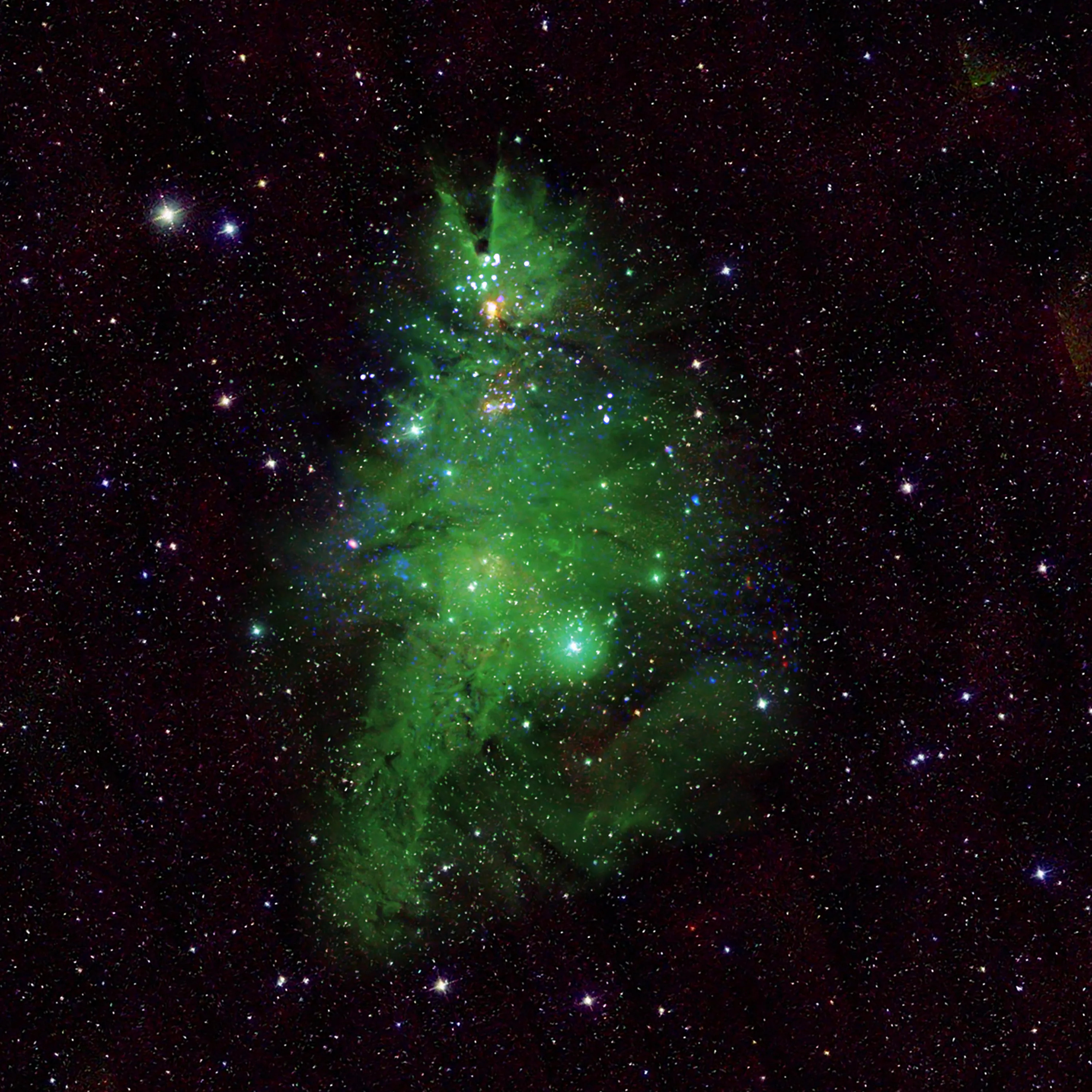NASA Telescopes Illuminate 'Christmas Tree Galaxy Clusters'
Two of the most powerful space telescopes illuminate 'Christmas Tree clusters' about 4.3 billion light-years away from Earth. The James Webb Space Telescope (JWST) and the Hubble Space Telescope took the picture of galaxy cluster MACS0416. It uses both visible and infrared light.
Author:Paula M. GrahamReviewer:Hajra ShannonDec 20, 20234.9K Shares151K Views

Two of the most powerful space telescopes illuminate 'Christmas Treeclusters' about 4.3 billion light-years away from Earth. The James Webb Space Telescope (JWST) and the Hubble Space Telescope took the picture of galaxy cluster MACS0416. It uses both visible and infrared light.
As it turns out, GC 2264 is a group of very young stars that are between one and five million years old. They are in the Milky Way, which is about 2,500 light-years from Earth. The stars in NGC 2264 are all different sizes compared to the Sun. Some have less than a tenth of the Sun's mass, while others have about seven times that much.
NASA Telescopes Illuminate Christmas Tree
NASAsays that a stunning new picture made with both the James Webb Space Telescope and the Hubble Space Telescope shows one of the most detailed views of the universe ever seen.
The picture was made by putting together infrared data from Webb and visible light data from Hubble. It shows a pair of faraway galaxy clusters crashing through a range of light wavelengths that is so wide that it seems to sparkle with color.
NASA says the galaxy groups are about 4.3 billion light years away from Earth. Scientists think that they will eventually join together to make an even bigger cluster. The group of cosmic objects is officially known as MACS0416, but scientists working on the large study have been calling it the "Christmas Tree Galaxy Cluster" because of the way it looks with all of its different colors.
In the picture, the different colors show the different lengths of light waves. The smallest ones are blue, the next-to-longest ones are green, and the very longest ones are red. The wavelengths vary from 0.4 to 5 microns, and this makes the scenery of galaxies look very bright.
The galaxies' colors can also help you figure out how far away they are. Hubble is the best telescope for finding the bluest galaxies because they are close and have a lot of star formation going on. The farther away the more red galaxies are, the better chance you have of seeing them with JWST. It is also possible for some galaxies to look very red because they have a lot of cosmic dust that absorbs bluer starlight.
“The whole picture doesn’t become clear until you combine Webb data with Hubble data,”Rogier Windhorstsaid in a statement. For the JWST observations, Windhorst was in charge of the PEARLS study (Prime Extragalactic Areas for Reionization and Lensing Science), which is run by an astronomer at Arizona State University.
“„We’re calling MACS0416 the 'Christmas Tree Galaxy Cluster', both because it’s so colorful and because of the flickering lights we find within it. We can see so many transients in certain regions of this area because of a phenomenon known as gravitational lensing, which is magnifying galaxies behind this cluster.- Haojing Yan
The team found the moving objects by looking at four sets of pictures of the galaxy cluster taken by the JWST over 126 days.
“„Right now, we have this rare chance that nature has given us to get a detailed view of individual stars that are located very far away. While we are currently only able to see the brightest ones, if we do this long enough — and frequently enough — we will be able to determine how many bright stars there are, and how massive they are.- Haojing Yan
NASA said that the fact that so many transients were found in a short amount of time means that astronomers could find many more transients in this cluster and others like it by keeping an eye on them regularly with the JWST.
Final Words
NASA says that a professor from the University of Missouri led a group of scientists who helped put together one of the most complete pictures of the universe ever taken.
NASA says that the new picture of the "Christmas Tree Galaxy Cluster," a large group of galaxies, shows "a wealth of detail" that could only be seen by joining the power of the James Webb Space Telescope (JWST) and the Hubble Space Telescope.
The Hubble found the group of stars a long time ago. NASA says that putting these pictures together with the infrared light from the JWST "significantly bolsters this deep look by going even farther into the early universe," according to NASA.

Paula M. Graham
Author

Hajra Shannon
Reviewer
Latest Articles
Popular Articles